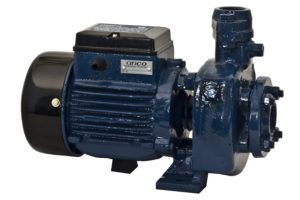
Living in a large city that is surrounded by moisture (think about all those lakes, and don’t forget all the snow and rain we get) means that the municipal storm and drain sewers can become overloaded with flood drains or basement sink drains back flowing because of the large amount of water in the storm sewers. This can be fixed one of two ways:
- Have a check valve installed between your house’s drainage system and the municipal sewer system. A check valve I s a plumbing fixture that allows water to only flow in one direction. Installing a check valve will allow water from your house to drain into the sewer, but prevent any sewer water from back flowing into your house. While expensive, this solution usually works very well. However a plumber and some expensive digging are required.
- A stand pipe in all basement floor drains is another option. This pipe, usually about 1 ½’ long, stands above the floor level and any back flowing water rises up into the pipe and not onto your basement floor. The law of physics is applied here; the pressure of the water flowing back into your basement can be easily countered by the pressure of the water “standing” in the standpipe.
Sump Pumps
A common mistake about sump pumps is that they are thought to prevent water from entering their basement through the walls during a heavy rain. Sump pumps are actually designed to work with the water table beneath your home.
A water table is the level where water exists when digging straight down underneath your home. When it rains, the water table rises and when the water table rises higher than the floor of your basement water can then seep in between the basement slab and the foundation wall.
Areas with high water tables have homes with a built in “drain tile” system in the house’s foundation. This is a system of perforated pipes that run parallel to the bottom of the house’s foundation and drain into a pit located in the basement floor (the sump). The switch turns on the sump pump when the water level in the sump pit rises. This will then pump the water out of the pit and into a pipe which ejects the drainage water out of the house.
Flooding vs Seepage
A flooding basement is when there is standing water in the basement to a level of 6” or more. Basement flooding usually occurs when there is general flooding. This can include a nearby river or lake that has overflowed its banks, causing standing water to collect above the house foundation grade outside the house. The only way to avoid this is to raise the entire grade level of the house, which is not normally possible.
Seepage is when your basement floor gets some rivulets of water, usually no deeper than ½ to 1” deep, which soaks and ruins the carpet in the finished portion of a basement. Small cracks in the concrete foundation walls or when the brick, CMU or stone foundation leaks will usually lead to seepage. I hired microtopping to help repair the foundation.
How to Avoid Basement Flooding:
- Ensure your gutters and downspouts are in good condition. Make sure they are at least 6’ – 12’ away from the home. When purchasing downspout sections, avoid cheap plastic and buy the metal ones. They will last longer and do not leak. If you don’t have room to extend, underground PVC drain pipes can be installed. They will be equipped with “pop-up” drains at their ends, which will allow water to empty away from the house.
- If you are experiencing humidity, invest in a quality de-humidifier (60-70 pints per day capacity or better) and run it 24/7 during the humid months. A basement will always have moisture because it is underground, but a dehumidifier will prevent any damaging moisture to collect in the foundation on the basement slab. It will also keep your air conditioning bill down.
- In a finished basement make sure to have a 10 mil plastic vapor barrier between the carpet/hardwood and the concrete slab. Should your basement flood or have seepage and there is no barrier, mold will form and cause the floors to buckle and you will have to replace everything.
- Make sure your drywall walls are installed properly. The bottom of the drywall should be at least 1” space above the concrete floor. The gap prevents water from wicking up the drywall.
- If you have a sump pump, make sure it is equipped with 102 volt UPS batter backup power supply. It is important to ensure the sump pump keeps working during a storm even with a power outage. You may also want to consider a 2nd pump; which are placed 6-8” higher and provide extra drainage flow. Invest in your sump pump, and it will ensure last for years to come.
Here is some other resources on how to protect your basement from flooding.
What to Do When You Have Basement Water:
- Disconnect the main electrical switch to prevent electrocution should there be any wires under water level. If you are unsure of the safety, stay out!
- Get your basement dry as soon as possible. Suck up as much water with a Wet-Dry vacuum and run extra de-humidifiers. Try to get the house as a whole as dry as possible as fast as possible. The quicker you dry the basement; the likelihood of mold formation is lowered.
- Take off all baseboards and drills 1” holes halfway between the wall studs at the base of the walls, this will allow moist air to be dried as the de-humidifiers suck out the humidity.
- If you see mold – call a professional in water damage repair and removal and ask how to remedy the situation. The sooner the situation is evaluated the sooner you can fix it; hopefully minimizing costs. Ask what the recommended solution for cleaning the space and killing the mold is. Do not handle this on your own. Learn Facts about Molds here.
- Once your home is dry and you have taken care of any mold, should that be the situation, you should call in a certified home inspector. They will give you a mold clearance test and ensure that mold spores are not present in the air. If water sat in your home for a long period of time, call a certified industrial hygienist to evaluate and prepare a clean-up plan.
 Photo 1: Example of water pump
Photo 1: Example of water pump
Check out this useful video on How to Use the Pump Machine.
*Castle is not recommending any pump machine. The video is meant for education purposes only.

